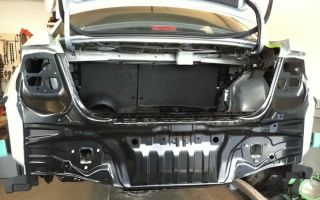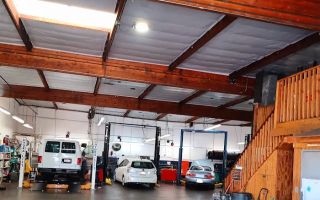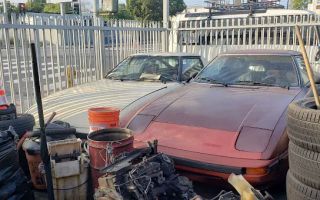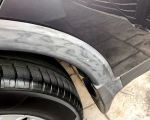- 1 - #understanding-the-dangers-of-hail-storm-driving - Understanding the Dangers of Hail Storm Driving
- 2 - #preparing-your-vehicle-before-the-storm - Preparing Your Vehicle Before the Storm
- 3 - #tips-for-safe-driving-during-a-hail-storm - Tips for Safe Driving During a Hail Storm
- 4 - #real-life-stories-and-lessons-learned - Real-Life Stories and Lessons Learned
- 5 - #how-rescue-and-towing-can-help-in-severe-weather - How Rescue & Towing Can Help in Severe Weather
1. Understanding the Dangers of Hail Storm Driving
Hail storms are unpredictable and can turn a routine drive into a hazardous situation within minutes. The force of falling hail can crack windshields, damage bodywork, and reduce visibility to near zero. In many regions across the United States — especially in the Midwest and the South — hail season brings a wave of road accidents caused by panic, poor visibility, and slippery road conditions.

AJ's Auto Glass & Detailing
4404 S 84th St, Omaha, NE 68127, USA
1.1 The Hidden Dangers Beyond Hailstones
Beyond the obvious damage to vehicles, hail often comes with strong winds and heavy rain. These elements can obscure lane markings, reduce tire traction, and cause vehicles to hydroplane. Drivers may also face debris such as branches or small rocks being blown onto the roadway, adding to the chaos.

AJ's Auto Glass & Detailing
4404 S 84th St, Omaha, NE 68127, USA
1.2 The Science of Hail and Its Impact
Hail forms when strong thunderstorms carry raindrops into extremely cold layers of the atmosphere. These frozen pellets can vary from pea-sized to golf ball-sized — or even larger. When traveling at highway speeds, a car meeting falling hail is like colliding with small, fast-moving stones. This is why safety and caution are crucial when you find yourself caught in one.
2. Preparing Your Vehicle Before the Storm
Preparation is the key to survival in extreme weather. Before the storm season starts, it’s wise to check your vehicle and emergency gear to ensure you’re ready for unexpected hail.
2.1 Regular Maintenance Checks
Ensure your windshield wipers are in excellent condition and your tires have good tread depth to prevent skidding. Keep your headlights, brake lights, and hazard lights functional so you can signal other drivers even in low visibility. Check your defroster and air conditioning to prevent your windows from fogging up during a hail storm.
2.2 Keep an Emergency Kit
Your emergency kit should include a flashlight, first aid supplies, a blanket, a power bank, and a reflective safety vest. Add a sturdy car cover or thick blanket that can shield your windshield from potential hail damage if you’re parked outside. A compact umbrella and gloves can also help if you need to step outside temporarily.
2.3 Monitor Weather Forecasts
Before long drives, check the weather forecast. Apps and radio updates can alert you to storm warnings along your route. Knowing when and where storms might occur gives you the option to delay your trip or take safer alternate routes.
3. Tips for Safe Driving During a Hail Storm
When caught unexpectedly in a hail storm, staying calm and following these tips for safe driving during a hail storm can make all the difference between minor inconvenience and major danger.
3.1 Slow Down Immediately
Reduce your speed gradually. Slamming on the brakes may cause you to skid, especially if hail and rain have created a slick surface. A slower speed allows you to maintain better control of your vehicle and increases reaction time for sudden obstacles.
3.2 Seek Shelter Safely
If possible, find a covered area like a gas station canopy, underpass, or parking garage. Avoid stopping on the side of the highway, as this increases your risk of being hit by other vehicles. If shelter is unavailable, angle your car so the hail hits the front windshield rather than side windows, which are more prone to shattering.
3.3 Use Hazard Lights Wisely
Turn on your hazard lights to alert other drivers but avoid using high beams — the glare can reflect off the hail and reduce visibility even more. Keeping your lights steady helps approaching vehicles identify your position on the road.
3.4 Stay Inside Your Vehicle
Never exit your car during a hail storm unless absolutely necessary. Hailstones can cause injury, especially larger ones traveling at high velocity. If you have passengers, instruct them to move away from windows and cover their heads with jackets or blankets for protection.
3.5 Avoid Flooded Areas
Hail storms often accompany heavy rain, leading to flash floods. Never attempt to drive through standing water, as it can conceal potholes, debris, or even strong undercurrents. Turn around and seek higher ground instead.
4. Real-Life Stories and Lessons Learned
In 2023, a Colorado driver shared on social media how they narrowly avoided disaster by pulling under a highway overpass just minutes before massive hail began to fall. Their quick decision saved not only their windshield but also prevented injuries from shattered glass. Conversely, in Texas, a family ignored storm warnings and continued driving, resulting in severe vehicle damage and minor injuries from flying glass shards.
4.1 Learning from Experience
These real-life examples highlight that awareness and preparation are key. Drivers who monitor weather conditions, act quickly, and understand their surroundings can dramatically reduce the risk of harm. Hail storms don’t last forever — patience and calm decision-making often lead to safer outcomes.
5. How Rescue & Towing Can Help in Severe Weather
At Rescue & Towing, we’ve assisted countless drivers stranded during hail storms, flash floods, and other extreme weather conditions. Our emergency response team specializes in roadside recovery and towing services designed for tough weather situations. Whether your car suffers hail damage, a flat tire, or loss of control due to slippery roads, we’re here to help.
5.1 Expert Advice for Weather Preparedness
Our experts always recommend that drivers carry emergency kits and understand basic weather safety. If you know a hail storm is approaching, avoid unnecessary travel. And if you must drive, follow these tips for safe driving during a hail storm to stay as protected as possible.
5.2 Stay Calm, Stay Safe
Hail storms can be frightening, but preparation and composure are your best tools. The next time you see dark clouds forming on the horizon, remember that a few preventive measures can protect both you and your vehicle. And when in doubt, rely on trusted professionals like Rescue & Towing for roadside assistance and safety support — we’re dedicated to keeping drivers safe, no matter the weather.




























